
How to come up with an effective and manageable research paper topic.
- Subject:
- Business and Communication
- Communication
- Material Type:
- Lesson
- Provider:
- State University of New York
- Date Added:
- 09/27/2023

How to come up with an effective and manageable research paper topic.

This book uses a balanced blend of frameworks and illustrations to teach you how to tackle the challenge of driving performance into the future.
Kim Warren takes special care with this new textbook, Building Strategy and Performance, to ensure that it delivers instruction on how to deliver strategy powerfully over a sustained period of time.
This book helps you to show your students where the levers are that they can control and how to choose what to do, when, and how much to achieve their specific goals.
This book effectively outlines the dynamics of strategy, how one drives performance - past, today and into the future. It shows what causes performance to improve or deteriorate and what your students can do to change this trajectory for the better.
But don't take our word for it, review the book now to see if it can help you to deliver the kind of tactical strategy course you desire for your students.
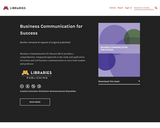
Business Communication for Success (BCS) provides a comprehensive, integrated approach to the study and application of written and oral business communication to serve both student and professor.

Business English for Success is a creative solution to a common challenge across Business Communication courses: Business English or Business Presentations? Some classes place an equal emphasis on oral and written communication. If that's the case for you check out our text Business Communication for Success. If, however, your class places the emphasis squarely on written communication and writing proficiency, then Business English for Success is for you.
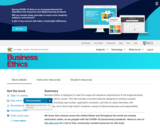
Business Ethics is designed to meet the scope and sequence requirements of the single-semester business ethics course. This title includes innovative features designed to enhance student learning, including case studies, application scenarios, and links to video interviews with executives, all of which help instill in students a sense of ethical awareness and responsibility.
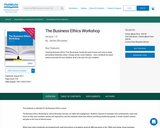
Ethics is about determining value; it's deciding what's worth doing and what doesn't matter so much.Business ethics is the way we decide what kind of career to pursue, what choices we make on the job,which companies we want to work with, and what kind of economic world we want to live in and thenleave behind for those coming after. There are no perfect answers to these questions, but there's adifference between thinking them through and winging it. The Business Ethics Workshop provides aframework for identifying, analyzing, and resolving ethical dilemmas encountered through working life.

Students in an introductory Management Information Systems (MIS) course often ask what a career in MIS looks like. Lacking a clear vision, they make their own assumptions. Often they assume the career involves programming with little human interaction. That MIS is a technical field could not be further from the truth. MIS job descriptions typically require candidates to be able to collaborate, communicate, analyze needs and gather requirements. They also list the need for excellent written and communication skills. In other words, MIS workers are constantly interacting with other people both inside and outside the organization. They are coming up with creative solutions to business problems.
This course is designed to help students get a feel for what a career in MIS would be like. Our students report that they learn more about information systems from their internships than from their IS courses. Consequently, we designed a course that looks very much like an internship—an introduction to the field followed by a substantial project.

Business Law I Essentials is a brief introductory textbook designed to meet the scope and sequence requirements of courses on Business Law or the Legal Environment of Business. The concepts are presented in a streamlined manner, and cover the key concepts necessary to establish a strong foundation in the subject. The textbook follows a traditional approach to the study of business law. Each chapter contains learning objectives, explanatory narrative and concepts, references for further reading, and end-of-chapter questions.
Business Law I Essentials may need to be supplemented with additional content, cases, or related materials, and is offered as a foundational resource that focuses on the baseline concepts, issues, and approaches.
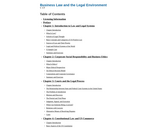
This textbook is used for all sections of Business Law 1 (BA 207) and Business Law 2 (BA 208) at Grand Rapids Community College. It provides context and essential concepts across the entire range of legal issues with which managers and business executives must grapple. The text provides the vocabulary and legal acumen necessary for businesspeople to talk in an educated way to their customers, employees, suppliers, government officials—and to their own lawyers.
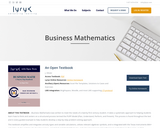
This textbook was written to meet the needs of a twenty-first century student. It takes a systematic approach to helping students learn how to think and centers on a structured process termed the PUPP Model (Plan, Understand, Perform, and Present). This process is found throughout the text and in every guided example to help students develop a step-by-step problem-solving approach.
This textbook simplifies and integrates annuity types and variable calculations, utilizes relevant algebraic symbols, and is integrated with the Texas Instruments BAII+ calculator. It also contains structured exercises, annotated and detailed formulas, and relevant personal and professional applications in discussion, guided examples, case studies, and even homework questions.
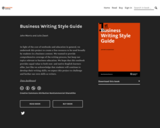
In light of the cost of textbooks and education in general, we undertook this project to create a free resource to be used broadly by students in a business context. We wanted to provide comprehensive coverage of the writing process, but keep our topics relevant to business education. We hope that this textbook provides equal value to both non- and native-English learners alike. Just like we acknowledge that students will continue to develop their writing skills, we expect this project to challenge and further our own skills as writers.

Learn how to use some of the library's databases to choose a topic and then narrow it using concept maps or brainstorming techniques. Created by Suffolk County Community College Library, JMM, 04/2013.
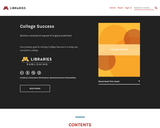
College Success takes a fresh look at what it means, in today’s world, with today’s students, to be successful in college.Although many of the topics included—from study skills to personal health, from test-taking to managing time and money—will look familiar to those who have used student success texts that have been around for many editions, College Success takes a new approach. The focus is on realistic, practical tools for the students who need them. This is a book designed, frankly, for students who may have difficulty with traditional college texts. The style is direct and to the point. Information is presented concisely and as simply as possible. This is not a weighty tome that discusses student success—this is a manual for doing it.College student demographics have changed considerably in recent decades. More than a third of all students enroll not directly from high school but after a delay of some years. More students are working and have families. More students come from varied ethnic and cultural backgrounds. More students are the first in their family to attend college. More students have grown up with electronic media and now read and think in ways different from the previous generation. With these and so many other cultural changes, more students are not well prepared for a college education with the study skills and life skills they need to become successful students.For each student to get the most out of College Success and their college experience they must understand who they are as it relates to college. To that end, in every chapter students explore themselves, because success starts with recognizing your own strengths and weaknesses. Students make their own goals based on this self-assessment, determining what success in college really means for them as individuals. Interactive activities then help students learn the choices available to them and the possibilities for improving their skills. Skills are presented in step-by-step processes, tips for success in manageable highlighted displays. Most important, students always see the value of what they are reading—and how they can begin to apply it immediately in their own lives.College Success is intended for use in Freshmen Orientation, Study Skills or Student Success courses. A 2009 study revealed that currently nationwide, 34% of college freshmen do not return to their college for their sophomore year. This book is designed to help change that.

An overview of some communication basics, including three common communication models: Action, Interactive, and Transactional.
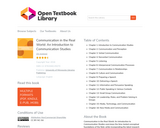
Communication in the Real World: An Introduction to Communication Studies overviews the time-tested conceptual foundations of the field, while incorporating the latest research and cutting-edge applications of these basics. Each chapter will include timely, concrete, and real-life examples of communication concepts in action. A key feature of this book is the integration of content regarding diversity and organizational communication in each chapter through examples and/or discrete sub-sections. Discussions of diversity are not relegated to feature boxes. Also integrated into the content are examples that are inclusive in terms of race, gender, sexuality, ability, age, marital status, religion, and other diverse identity characteristics.

Video presentation on Connotation vs Denotation.
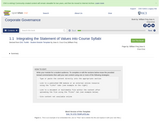
This course takes an interdisciplinary approach to ethics in business and provides modules in Ethical Leadership, Ethical Decision-Making, Social Responsibility, and Corporate Governance. Students will actively study ethical theory by carrying out exercises to help them build theory-based tools for encountering ethical problems in business practice. They will also work with cases in business ethics designed to give them practice in developing skills of ethical leadership, ethical decision-making, and carrying out socio-technical analyses to respond to issues of social responsibility. This course will culminate in an Ethics Bowl competition in which students will practice ethics advocacy in a variety of organizational contexts in business. This course is being developed as a part of an NSF-funded project, "Collaborative Development of Ethics Across the Curriculum Resources and Sharing of Best Practices," NSF SES 0551779.
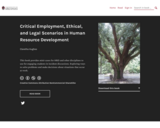
This book provides mini-cases for HRD and other disciplines to use for engaging students in incident discussions. Exploring ways to solve problems and make decisions about situations that occur at work.

When you combine the sheer scale and range of digital information now available with a journalist’s "nose for news" and her ability to tell a compelling story, a new world of possibility opens up. With The Data Journalism Handbook, you’ll explore the potential, limits, and applied uses of this new and fascinating field.
This valuable handbook has attracted scores of contributors since the European Journalism Centre and the Open Knowledge Foundation launched the project at MozFest 2011. Through a collection of tips and techniques from leading journalists, professors, software developers, and data analysts, you’ll learn how data can be either the source of data journalism or a tool with which the story is told—or both.

Principles of dynamic delivery, and how to select and use presentation aids.